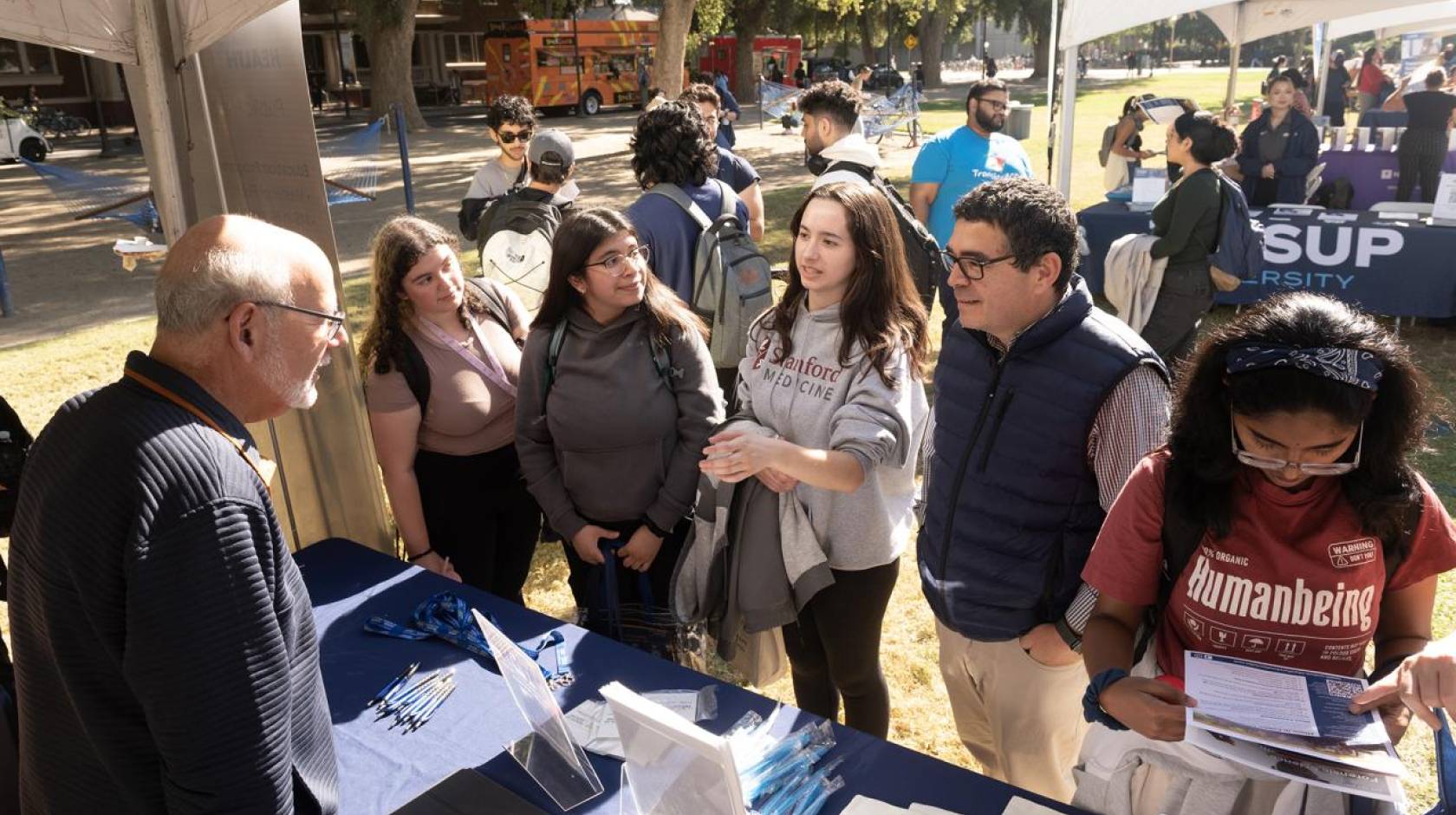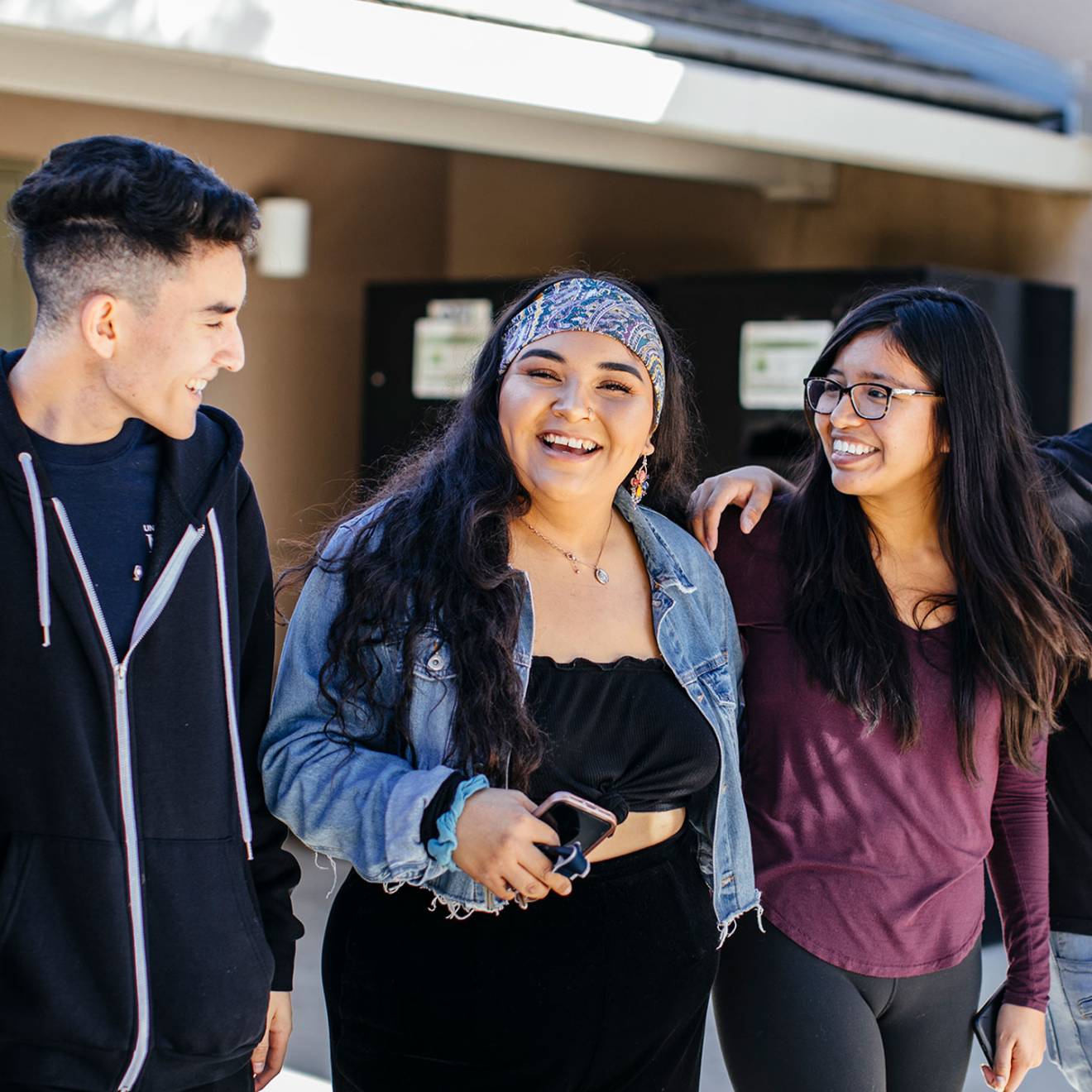Julia Ann Easley, UC Davis

The University of California, Davis, is now eligible to be one of the nation’s few research-intensive universities designated as a Hispanic-Serving Institution, or HSI, after fall enrollment numbers crossed the threshold for HSI status for the first time.
Latinx enrollment at UC Davis has reached a new peak of about 8,100 students or 25.1 percent of undergraduate full-time-equivalent students, which surpasses the U.S. Department of Education’s criteria of at least 25 percent for HSIs. This fall’s 25.1 percent was up from 24.6 percent last year.
The campus has long-sought HSI designation to underscore its commitment to serving Latinx students. The status also makes the university eligible to apply for competitive grants from the federal government and foundations to support student success, innovation and institutional transformation benefiting all students.
“I’m grateful to all the members of the UC Davis community who worked for nearly a decade to reach this milestone,” said Chancellor Gary S. May. “Achieving eligibility for HSI designation shows that UC Davis is fulfilling its mission to serve the state, the nation and the world. We’re empowering more young people from underserved communities and closing the gap on socioeconomic disparities in access to higher education, particularly research universities.”
In each of the past few years, UC Davis has met HSI requirements related to serving low-income students and core expenses, and it is expected that the campus will seek to renew the status for those two criteria in January. With their anticipated renewal and this fall’s enrollment numbers, the next steps are to continue working on Latinx student success at all levels and seek federal funding to further support institutional transformation.
Two designations
The campus already secured the federal government’s status as a Minority Serving Institution in 2019 as an Asian American and Native American Pacific Islander-Serving Institution, or AANAPISI. Two designations position UC Davis to pursue a broader range of funding opportunities that will further support student success and strengthen academic programs.
“This synergy provides opportunities to deepen our understanding of and better serve Asian, Pacific Islander and Latinx students,” said Pablo Reguerín, vice chancellor for Student Affairs. “It helps us build a more inclusive campus community and links together the success of all students.”
A vision for leading HSI STEMM
Luis Carvajal-Carmona, a professor of biochemistry and molecular medicine who oversees the campuswide Avanza HSI initiatives as associate vice chancellor for academic diversity in Diversity, Equity and Inclusion, or DEI, has a special ambition for UC Davis. He wants UC Davis to capitalize on its status as a Research I university — signifying a high level of research activity — to become the top HSI for science, technology, engineering, mathematics and medical sciences, or STEMM.
Instructor for the first-year seminar “Becoming a Latino Scientist,” he said he sees UC Davis STEMM education and research experiences as paths to well-paying careers and social mobility for Latinx students.
Alumni ‘incredibly proud’
Neptaly “Taty” Aguilera, a 1973 graduate of UC Davis, has championed Latinx opportunities, support and achievement as a leader of the UC Davis alumni association, the campus’s Chicanx Latinx Alumni Association and the Hispanic Community Council, as well as in his current role as co-chair of the UC Chicanx Latinx Alumni Association.
“For UC Davis, reaching the HSI milestone will only further contribute to its prominence in the nation and world as a public institution of higher education,” he said. “As Chicano alumni, we are incredibly proud of this major achievement for UC Davis.”
Long an advocate for Latinx students and alumni of UC Davis, 1972 graduate Caroline Cabias has served with the Chicanx Latinx Alumni Association, the HSI Task Force, the HSI Community Council and the UC Chicanx Latinx Alumni Association. “This is a public statement that we can look forward to more partnerships with our Hispanic stakeholders and community leaders,” she said, “to expand campus programs not only to sustain the enrollment but to increase it to better recognize the demographics of California.”
Joy and appreciation
Word about the HSI enrollment benchmark was met with joy and appreciation for those who helped lead the work including Enrollment Management, which includes Undergraduate Admissions; members of campus organizations and committees; Lina Mendez, the former director of HSI initiatives; Blas Guerrero, interim director of Avanza HSI initiatives; and Raquel Aldana, a professor of law who, as the former associate vice chancellor for academic diversity, co-chaired the HSI Task Force.
The achievement also builds upon research by Marcela Cuellar, an associate professor of higher education leadership at UC Davis who studies HSIs, emerging HSIs and Latinx student success.
“I extend sincere thanks to all who have been working toward this goal over many years,” said Renetta Tull, vice chancellor for DEI. “There are so many people and units across campus, alumni and members of the community who have put in time and effort to make this happen.”
Student success
Rodrigo Bonilla, director of the Chicanx Latinx Retention Initiative, said its work supports Latinx academic success through a culturally informed approach that centers student’s identities and experiences. Opened in 2017, the Center for Chicanx and Latinx Academic Student Success, also known as El Centro, offers on-site academic advising and tutoring, mental health support, professional development opportunities, academic seminars, community programs and more.
“We’ve been able to engage in many innovative initiatives because we have institutional support,” he said.
Lorena Márquez, chair of Chicana/o/x studies, said reaching the 25 percent enrollment mark does more than recognize the work of the academic department, El Centro, the Undocumented Student Resource Center and many others. “It signals to future UC Davis students that we are a friendly place where they can find community and foster lasting personal and professional relationships.”
